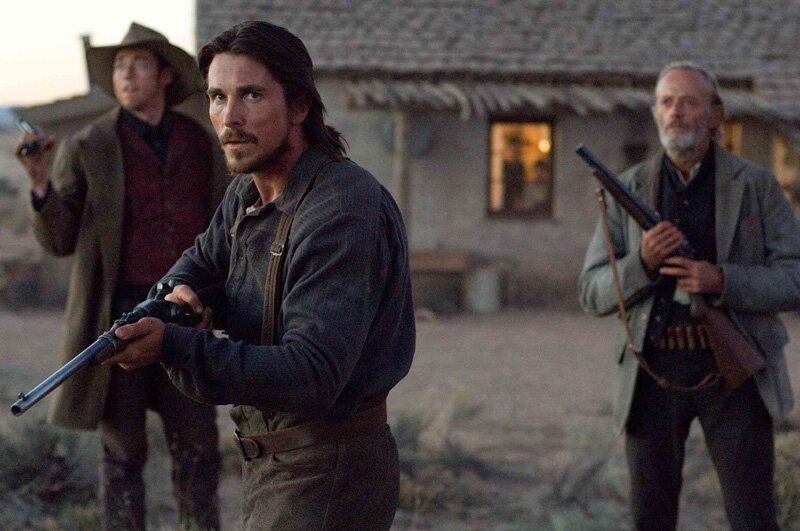 by Courtney Hilden
by Courtney Hilden3:10 to Yuma is a Western following Dan Evans (Christian Bale), a rancher desperately in debt, who agrees to transport Ben Wade (Russell Crowe), a notorious criminal, to the Contention Train Station to get Wade on the 3:10 train to Yuma, a prison. While transporting Wade, the two feel each other out, not exactly bonding but developing a level of respect.
Bale is engaging as Evans, and you can’t help but root for him. The film also stars the geek-approved Kevin Durand (who played Keamy on Lost) and Alan Tudyk (who played Wash on Firefly). Given Durand’s menacing performance on Lost, it’s unsurprising that he also plays a bad guy here, though it’s a one-note character. It’s too bad Durand wasn’t playing the bad guy, as Crowe’s Wade is stiff at the beginning of the film and far too warm at the end. Tudyk plays Doc Porter, one of the few uncompromisingly good guys in the movie, and looks better here with his blonde beard and large glasses than he does in his other recent movies. The only actor who grates in this movie is Logan Lerman, who plays William, Evans’s oldest son.
The film also had a surprising amount of people of color.
 Often, Westerns have whitewashed the American West. Although this movie isn’t perfectly progressive, it does at least acknowledge that there are non-whites in the West and that they are treated poorly because of it, like when they stop at a labor camp populated mostly by Chinese immigrants, who are treated as slaves. Unfortunately, all of the Native Americans in this film were depicted as evil, since one was part of Wade’s band of thieves and the others were part of the “blood thirsty” Apache tribe that attempts to kill most of the main characters. The only good thing with the Native Americans is that Evans acknowledges that they were kicked off their land and that the Apaches here are the kind who absolutely refuse to move and are more likely to be violent because of their social position. Most Westerns don’t acknowledge the unfairness and inequality that the U.S. government encouraged, but this film does, although it’s brief.
Often, Westerns have whitewashed the American West. Although this movie isn’t perfectly progressive, it does at least acknowledge that there are non-whites in the West and that they are treated poorly because of it, like when they stop at a labor camp populated mostly by Chinese immigrants, who are treated as slaves. Unfortunately, all of the Native Americans in this film were depicted as evil, since one was part of Wade’s band of thieves and the others were part of the “blood thirsty” Apache tribe that attempts to kill most of the main characters. The only good thing with the Native Americans is that Evans acknowledges that they were kicked off their land and that the Apaches here are the kind who absolutely refuse to move and are more likely to be violent because of their social position. Most Westerns don’t acknowledge the unfairness and inequality that the U.S. government encouraged, but this film does, although it’s brief. Unfortunately, the Apaches are also apparently incompetently violent, since Wade defeats them. And, as always, all the good guys are white.
Unfortunately, the Apaches are also apparently incompetently violent, since Wade defeats them. And, as always, all the good guys are white.There were lots of realistic touches that made the movie work. For example, most of the blood was appropriately dark to the point of black. (Most movies make blood bright red so it’ll stand out, but in fact when exposed to air like that, it oxides much more, turning it dark.) The details on the sets, especially Porter’s operating room, were dead on and gave a great feel to the movie.
Like most Westerns, they're not much for accuracy but do have lots of violence. It's an interesting movie since it attempts to give a Christian allegory to a genre that has always worshiped lawlessness and rough living, and some of the actors give great performances.
No comments:
Post a Comment